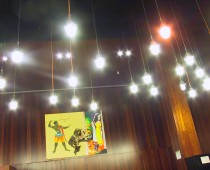The first to publish this idea were Dr. Englert and his colleague Robert Brout, who died in 2011. Dr. Englert was born in Etterbeek, Belgium, in 1932, and he studied engineering and physics at the Université Libre de Bruxelles, emerging with a Ph.D. in 1959. While a research associate at Cornell, he bonded with Dr. Brout, a professor there. When Dr. Englert returned to Belgium, Dr. Brout went with him.
While they were working on their paper, Dr. Higgs, a young theorist born in Newcastle-upon-Tyne, England, was working on his own version of the theory.
His paper was rejected by the journal Physics Letters, which was published at CERN, as having no relevance to physics. So he rewrote it and sent it to a rival journal, Physical Review Letters. Along the way he added a paragraph at the end, noting that the theory predicted a new particle, a spinless creature of indeterminate mass, which would become famous as the Higgs boson.
That paper was accepted with the proviso that he mention Dr. Englert and Dr. Brout’s paper, which had beaten him into print by seven weeks.
Meanwhile, three other physicists — Tom Kibble of Imperial College, London; Carl Hagen of the University of Rochester; and Gerald Guralnik of Brown University — were writing their own paper. Just as they were about to send it in, mail that had been delayed by a postal strike came in, containing journals with the other two papers, the one by Dr. Higgs and the one by Dr. Englert and Dr. Brout.
The groups and their friends have been arguing ever since over exactly who did and said what. In 2004, Dr. Higgs, Dr. Brout and Dr. Englert won the Wolf Prize, considered an important forerunner of the Nobel. In 2010, all six physicists shared the Sakurai Prize of the American Physical Society, another big award. Dr. Brout might logically have shared the Nobel if he were alive today; the prize is not awarded posthumously
